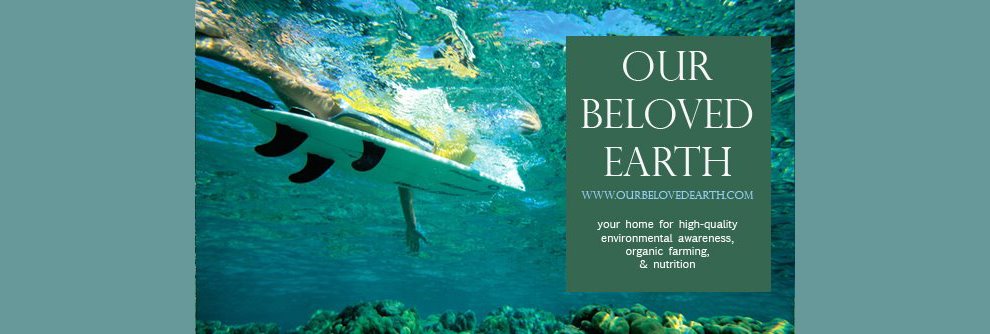Bayer Pesticide Chemicals Linked to Devastating Collapse of Honeybee Populations
by David GutierrezSource: http://www.naturalnews.com/z024362.html
(NaturalNews) German government researchers have concluded that a bestselling Bayer pesticide is responsible for the recent massive die-off of honeybees across the country's Baden-W�rttemberg region. In response, the government has banned an entire family of pesticides, fueling accusations that pesticides may be responsible for the current worldwide epidemic of honeybee die-offs.
Researchers found buildup of the pesticide clothianidin in the tissues of 99 percent of dead bees in Baden-W�rttemberg state. The German Research Center for Cultivated Plants concluded that nearly 97 percent of honeybee deaths had been caused directly by contact with the insecticide.
"It can unequivocally be concluded that a poisoning of the bees is due to the rub-off of the pesticide ingredient clothianidin from corn seeds," said the federal agricultural research agency, the Julius Kuehn Institute.
The pesticide was applied to rapeseed and sweet corn seeds along the Rhine River Valley, which borders Baden-W�rttemberg to the west and south.
"Beekeepers in the region started finding piles of dead bees at the entrance of hives in early May, right around the time corn seeding takes place," said Walter Haefeker, president of the European Professional Beekeepers Association.
A total of two-thirds of all bees in the entire state are believed to have been killed by the chemical.
"It's a real bee emergency," said Manfred Hederer, president of the German Professional Beekeepers' Association. "Fifty to 60 percent of the bees have died on average, and some beekeepers have lost all their hives."
Clothianidin, marketed in Europe under the brand name Poncho, is a widely used insecticide in the neonicotinoid family. Like all neonicotinoids, it is a systemic pesticide that is applied to the seeds of plants and then spreads itself throughout all plant tissues. Based on nicotine, the neonicotinoids function as neurotoxins that attack the nervous systems of insects such as honeybees.
The U.S. Environmental Protection Agency has classified clothianidin as "highly toxic" to honeybees. The chemical was approved for U.S. use in 2003 and German use in 2004.
Clothianidin manufacturer Bayer CropScience, a subsidiary of chemical giant Bayer, blamed the honeybee deaths on incorrect application of the pesticide. Before seeds are sprayed, a fixative should be applied to keep the poison from spreading into the rest of the environment. In the current situation, Bayer says, the fixative was not applied and clothianidin spread into the air.
But beekeepers and pesticide critics rejected this explanation, calling for Germany to follow France's footsteps in banning the chemical - and indeed, all neonicotinoids.
"We have been pointing out the risks of neonicotinoids for almost 10 years now," said Philipp Mimkes, spokesman for the Coalition Against Bayer Dangers. "This proves without a doubt that the chemicals can come into contact with bees and kill them. These pesticides shouldn't be on the market."
While stopping short of a total ban, the German Federal Office of Consumer Protection and Food Safety acted quickly upon release of the study data, placing a provisional ban upon all seven pesticides in the neonicotinoid family. These chemicals may not be used in Germany until the manufacturers can supply enough data to convince the government that they are safe.
The seven provisionally banned pesticides are the clothianidin-based brands Poncho and Elado; the imidacloprid-based brands Antarc, Chinook and Faibell; methiocarb-based Mesurol; and thiamethoxam-based Cruiser
Six of the seven products are made by Bayer, while Mesurol is manufactured by Syngenta.
Bayer's neonicotinoids have been blamed for killing honeybees before, most notably in France. There the company's best-selling pesticide, imidacloprid, was banned from use on sunflower seeds in 1999 after being blamed for killing off a third of the country's honeybees. In 2004, France extended the ban to sweet corn seeds. The government rejected Bayer's application for clothianidin use in France only a few months ago.
In North Dakota, a group of beekeepers is suing Bayer, alleging that imidacloprid was responsible for Colony Collapse Disorder (CCD) in that state in 1995. One-third of North Dakota honeybees died that year after imidacloprid was applied to rapeseed there.
Imidacloprid is marketed in France under the brand name Gaucho, but is also sold as Admire, Advantage, Confidor, Hachikusan, Kohinor, Merit, Premise, Prothor, and Winner.
Around the world, honeybee stocks are in decline, which scientists have warned could have devastating impacts on global food supplies. A total of 80 percent of world food crops are primarily or exclusively pollinated by honeybees, amounting to 130 crops and $15 billion worth of food each year in the United States alone.
Yet two million honeybee colonies have been lost in the United States in recent years, with massive dieoffs also reported across Europe and in Taiwan, where 10 million bees recently disappeared over the course of only two weeks.
"If nothing is done about it, the [British] honeybee population could be wiped out in 10 years," warned U.K. Farming Minister Lord Rooker in 2007.
While in many cases bees have actually been found dead, as in the Baden-W�rttemberg incident, beekeepers have been particularly alarmed by CCD, in which the bees simply vanish, leaving empty hives behind them.
Neonicotinoid pesticides have been suggested as a possible cause of CCD, with advocates of this theory noting that since the pesticide spreads through all plant tissues, bees might be exposed through the pollen of treated plants. At least one study concluded that neonicotinoids are likely to become concentrated in bee hives in high levels, transported by contaminated pollen.
A number of studies have found that in low doses, neonicotinoids produce symptoms consistent with CCD. Termites exposed to imidacloprid experienced disorientation and immune system failure, while bees exposed to low levels of the chemical experienced impaired communication, homing and foraging ability, flight activity, and olfactory discrimination and learning.
Sources for this story include: www.guardian.co.uk. pubs.acs.org, www.allheadlinenews.com.














